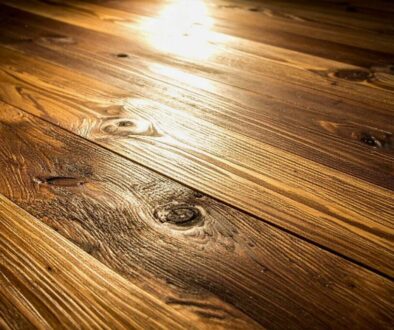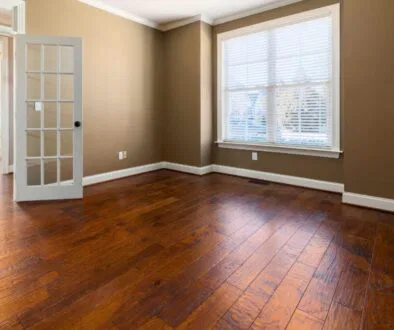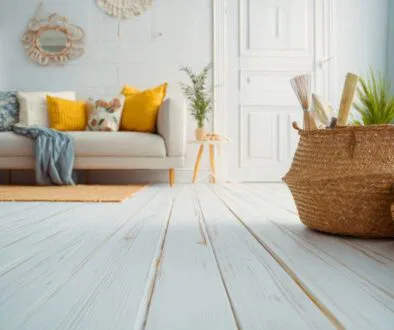Buckled Wood Floors: Causes and Fixes
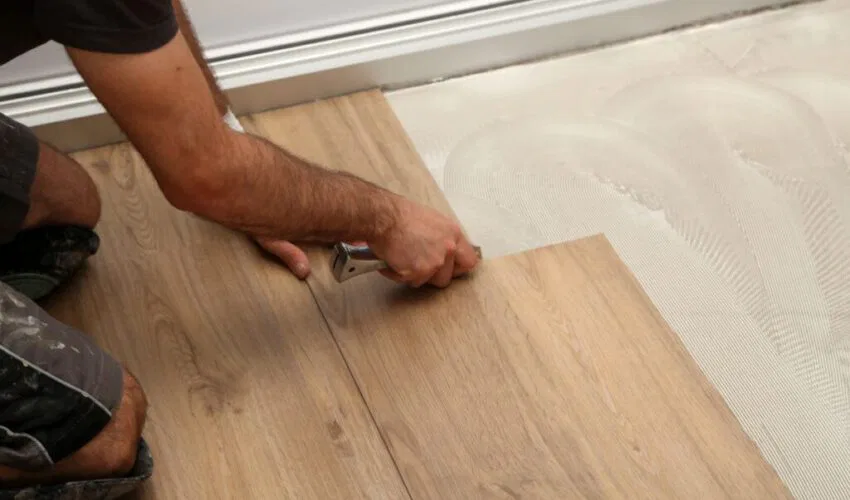
Published October 14, 2023
A homeowner’s worst nightmare is a damaged luxurious wood flooring. Of course, we all want a spectacular home, and a lovely wood floor often comes with it.
However, wood flooring requires some maintenance to avoid unwanted damage. The most common disaster you don’t want your beautiful house to have is buckled wood floors.
So, what causes the buckling of wood floors, and how can you fix it? Keep reading to find out.
What Are Buckled Wood Floors?
The buckling of wood floors is when your floorboards rise, causing humps and uneven surfaces.
Wood naturally expands and contracts as it reacts to environmental conditions. However, severe expansions and contractions can prevent your hardwood floor from returning to its original shape. This is when buckling starts.
What Causes Wood Floor Buckling?
The most common causes of buckling of wooden floors are either due to environmental factors or faulty installation. These include:
Water
Leaking appliances or moisture from a concrete subfloor can buckle your wood floors. When it gets wet and moisturized, the wood must accommodate the humidity. Thus causing the hardwood planks to swell. It would need to move upward and expand, which leads to buckling of the wood floor.
High Humidity
The buckling of wooden floors is also usual in highly humid environments. That’s why a wood floor is usually not recommended if you live in an area with humid weather, especially in small and windowless parts of your house, like the bathroom and kitchen.
Your wooden floor can absorb moisture from the air, and this will cause the wood to expand and buckle. Fans and ventilation can reduce buckling, though.
Improper or No Acclimation
Acclimation should be done first before installing the hardwood floors. If not, the wood may expand or contract after the installation, leading to the wood’s deformation.
Acclimation is a process where the wood planks stay within the rooms where they will be installed. This process has to be done for at least two weeks so that the wood can adjust to the temperature and humidity of the area.
Improper Installation
Taking care of your precious hardwood flooring is a plus and can prevent your wooden floor from buckling. However, if the installation is faulty, it will cause severe wood problems in the long run.
To address this, you should only hire professionals like Vintage and Specialty Woods to ensure your wooden floor is installed correctly. We are the most complete and thorough timber company for your project.
Our team of timber specialists ensures that you get the best quality and craftsmanship for your high-end and complicated projects that require intricate work. Our gallery of past projects and satisfied clients speak for our quality of work.
Wood Floor Repair: How to Fix a Buckled Wood Floor?
As mentioned, weather and moisture are the most common culprits of buckling wood floors. If the buckling is minimal, you can try drying the damaged area and see if it returns to its normal shape.
You can also try putting a little pressure or a heavy object on the buckled wood to settle it back into its place.
If these don’t work, calling a professional is highly encouraged. Replacing and fixing buckled wood floors can be a lot of work.
How to Fix Water-damaged Swollen Wood Floor?
Fixing water-damaged swollen wood floors requires careful attention and a step-by-step approach. Here are the steps you can follow to fix a water-damaged, swollen wood floor:
Step 1: Identify the source of water
Before starting any repairs, it’s crucial to identify and address the cause of damage.
Step 2: Remove standing water
If there is any standing water on the floor, use a wet vacuum or towels to remove it. Do not let the water sit for an extended period, as it can cause further swelling and damage.
Step 3: Dry the area and Assess
Fans, dehumidifiers, or open windows enhance air circulation and help faster drying. It’s essential to completely dry the affected area before proceeding with the repairs.
Examine the swollen wood floorboards to determine the extent of the damage. Look for signs of warping, cupping, or buckling. If the damage is severe, you may need to hire a professional for repair or replacement.
Step 4: Sand the swollen areas
Once the floor is completely dry, use a sander to sand down the swollen areas gently. Be cautious not to remove too much material, as this can affect the appearance and integrity of the floor.
After sanding, clean the floor’s surface using a damp cloth or mop. This will remove any dust or debris left from sanding.
Step 5: Apply wood conditioner
Apply a wood conditioner to the affected areas. This will restore moisture and improve the absorption of later treatments.
Step 6: Apply wood glue or epoxy
If the swelling has caused gaps between the floorboards, apply wood glue or epoxy to fill in the gaps. Follow the manufacturer’s instructions for proper application.
Step 7: Sand and refinish
Once the glue or epoxy has cured, sand the repaired areas again to ensure a smooth and even surface. Then, refinish the entire floor to restore its original appearance and protect it from future damage.
After completing the repairs, check the floor for any signs of recurring moisture or extra damage. Address any issues to prevent further complications.
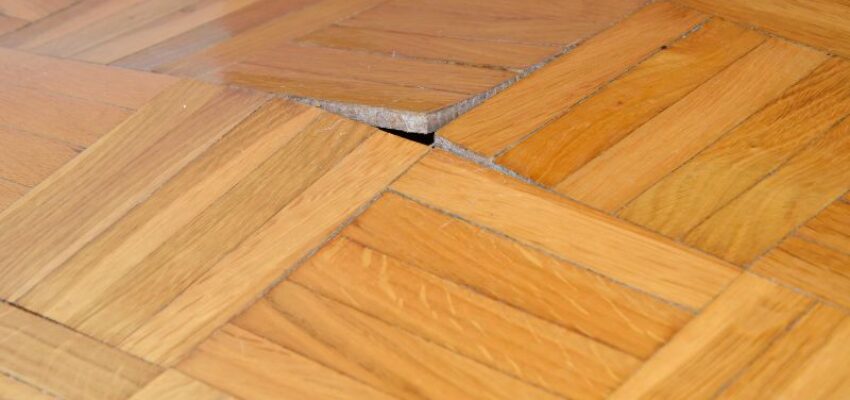
How to Fix Floor Bulging Upwards?
Repairing a floor that is bulging upwards requires careful attention and a systematic approach. Here are the steps you can follow to repair a floor that is bulging upwards:
Step 1: Identify the cause
Before starting any repairs, it’s essential to identify the underlying cause of the floor bulging. Common causes include moisture damage, improper installation, or structural issues. Understanding the cause will help determine the appropriate solution.
Step 2: Remove any obstacles and Assess
Clear the affected area of any furniture, rugs, or other objects that may impede the repair process. This will provide better access to the floor and make the repair easier.
Examine the bulging area to determine the extent of the damage. Inspect the floorboards or subfloor for signs of moisture, warping, or structural issues. If necessary, consult a professional to assess the situation accurately.
Step 3: Address moisture issues
If the bulging is due to moisture damage, it is crucial to identify and address the source of moisture. Fix any leaks and improve ventilation. You can also install a dehumidifier to prevent further damage before proceeding with repairs.
Step 4: Relieve pressure on the bulge
You may need to relieve pressure on the affected area to reduce bulging. This can be done by removing the baseboards around the perimeter of the bulge. You can also carefully cut into the center of the bulge with a circular saw.
Step 5: Investigate the subfloor and joists
Once the pressure is relieved, inspect the subfloor and underlying joists for any signs of damage or rot. Replace any compromised materials as necessary. This step ensures a solid foundation for the repaired floor.
Step 6: Flatten the bulging area
Using a hammer and a block of wood or a heavy object, gently tap down the bulging section of the floor. Be careful not to damage the surrounding areas or cause further problems.
Step 7: Secure the floorboards
To prevent future bulging, secure the floorboards properly. Use screws or nails to reattach loose boards to the subfloor, ensuring a tight fit. If necessary, add more support or reinforcement to strengthen the floor.
Step 8: Replace damaged flooring
If the bulging has caused irreparable damage to the floorboards, you may need to replace them entirely. Carefully remove the damaged boards. Then install new ones and make sure they are level and secure.
Once complete, sand the repaired area to create a smooth surface. Then, refinish the entire floor to restore its appearance and protect it from future damage.
Related: 12 Most Effective Wood Sealers According To Experts
Hire The Timber Experts For Your Next Project
Vintage & Specialty Wood should be your source of the highest quality timbers from around the world. When it comes to fabricating and installing reclaimed wood or specialty wood products in your home, we don’t cut corners. We offer many reclaimed wood and specialty wood products such as Douglas Fir, white oak, and much more. We also offer timber framing and wood flooring services as well. Contact our team today to speak to a timber expert about what Vintage & Specialty Wood can do for you.

This Blog Is Fact Checked
This content has undergone meticulous fact-checking by our team of internal experts. Gain a deeper understanding of the high editorial standards we uphold on our website here.

About The Author
Experience, exploration, and knowledge are the hallmarks of writer Rei Bayucca. Her dedication to crafting articles that both inspire and educate will leave you thinking long after you’ve finished reading.

